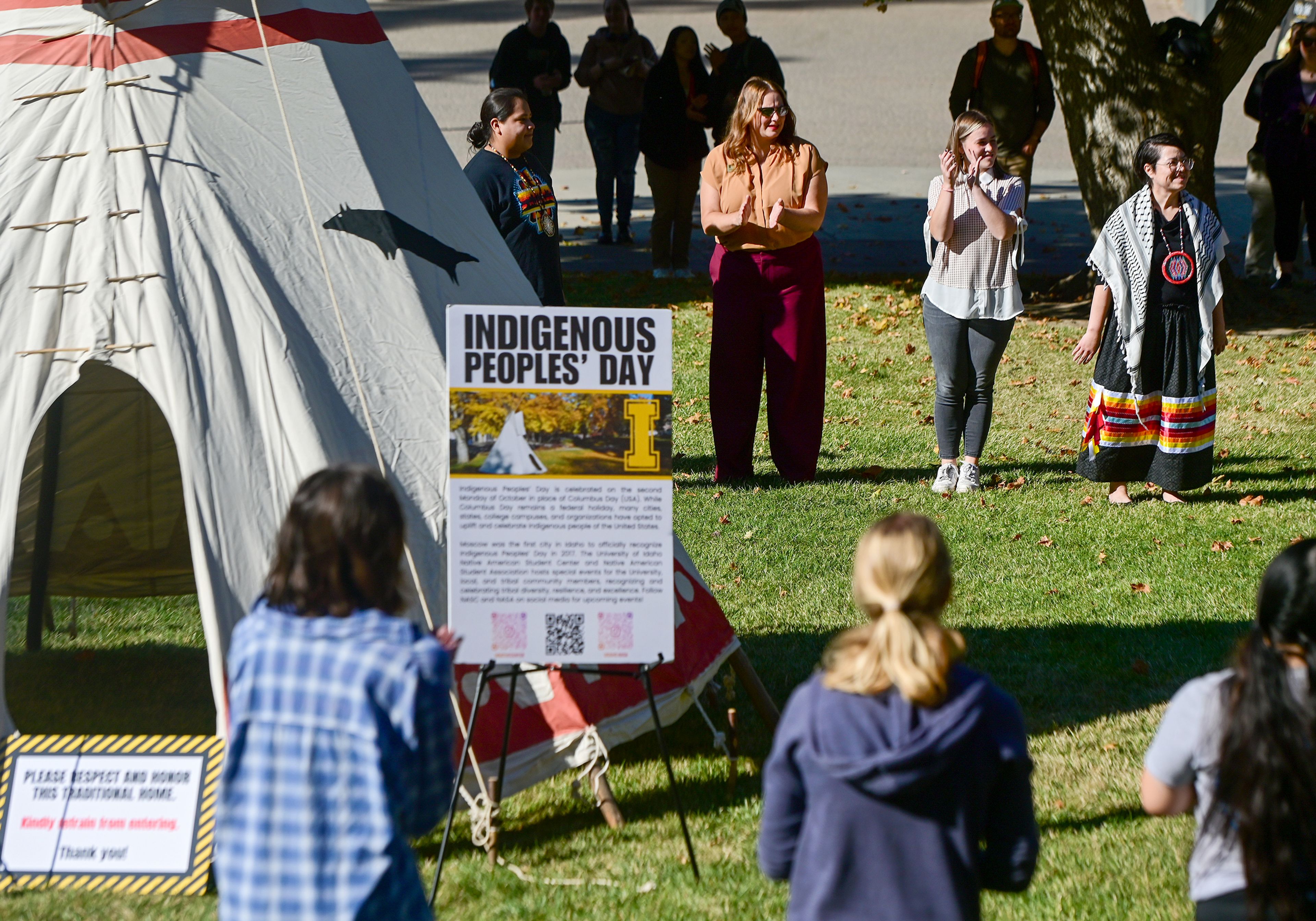Idaho working to delist grizzly bears
Petition timed to take advantage of similar moves from Montana, Wyoming
Idaho is preparing to ask the federal government to remove Endangered Species Act protections for grizzly bears.
The intention was announced during a presentation to the Idaho Fish and Game Commission at Boise on Thursday. It was unclear how far the state’s petition, which is expected to be completed in the next few weeks, will go and whether it will include all of the grizzly bear populations and recovery areas within Idaho or even all of those in the Lower 48. But officials said it will be timed to take advantage of grizzly bear delisting petitions recently submitted by Montana and Wyoming.
Deputy Director Jim Fredericks and Kathlene Trever, a deputy attorney general who works with the department, said leaving the bears listed under the Endangered Species Act will make it more difficult to build support for long-term conservation measures in rural communities and the federal government’s nearly 30-year old designation of grizzly bear recovery areas is legally and scientifically outdated.
Fredericks said Fish and Game officials are working with counterparts in the Office of Species Conservation to compile Idaho’s concerns.
“We expect the outcome of our scientific and legal policy review to result in a draft petition to delist grizzly bears in Idaho within the next few weeks, for review by the governor’s office and the (Fish and Game) commission,” he said.
Wyoming is asking the federal government to remove protections for grizzlies in the Greater Yellowstone Ecosystem. There are estimated to be about 1,000 grizzly bears in the area that is mostly in the Cowboy State but also includes parts of southwestern Montana and a sliver of eastern Idaho. The federal government delisted the Greater Yellowstone population in 2017 but the move was overturned by a federal judge.
Montana submitted a petition in December to delist the Northern Continental Divide Ecosystem population in and around Glacier National Park. That population also numbers about 1,000 bears.
Fredericks said the Fish and Wildlife Service may choose to consolidate the Wyoming and Montana petitions, making it important for Idaho to also weigh in since those petitions did not address the Selkirk, Cabinet-Yaak or Bitterroot recovery areas. There are about 50 bears each in the Selkirk and Cabinet-Yaak recovery areas in the state’s northern Panhandle and none in the Bitterroot Area in north central Idaho.
Trever said the Selkirk and Cabinet-Yaak areas — and the grizzly bear management units within them — are quite small in comparison to other grizzly bear recovery areas and may be too small to support the number of bears called for in recovery plans. Because those bears in those recovery areas are connected to robust grizzly bear populations in Canada, the state believes they don’t require federal protection. Trever also noted protections are stronger south of the border.
“It is our perspective that if conservation measures are stronger in Idaho and the United States than Canada, the result should not be a separate listing of the grizzly bears in the United States and having grizzly bears in Canada not be on the list,” she said. “So that is one of the areas on which we will focus.”
It is unclear how the petition may address the Bitterroot Recovery area that has been identified as prime grizzly bear habitat but does not have a resident population. However, grizzly bears occasionally move through or near the area.
A grizzly bear was mistakenly killed by a hunter in the upper part of Kelly Creek, a roadless section of the Clearwater National Forest in 2011.In 2019, at least two grizzly bears visited north central Idaho. A young male, fitted with a tracking collar, spent much of the summer south of U.S. Highway 12 and the Lochsa River near the Idaho-Montana state line. The bear left in the fall, denned in the Cabinet Mountains and did not return. A trail camera captured pictures of a grizzly bear in the Newsome Creek drainage off of the South Fork of the Clearwater River and a grizzly was seen in the White Bird Creek drainage. Officials don’t know if the White Bird and Newsome Creek grizzlies were different bears.
There were plans during the Clinton administration to release grizzly bears in the Selway-Bitterroot Wilderness Area and designate the animals as a “non-essential experimental” population, a classification that makes it easier for wildlife managers to remove problem bears. The reintroduction plans were spiked by the George W. Bush administration.
Following the meeting, Fredericks said the delisting petition is still under development. But he hinted it could be quite broad.
“I think the challenge is trying to figure out what would best meet Idaho’s needs altogether and what makes the most sense for grizzly bear conservation across the board. I can’t really go much further than that,” he said — but then did. “Is it a petition for Idaho alone or for the whole Lower 48 population?”
Gary Macfarlane, ecosystem defense director of the Friends of the Clearwater, a Moscow-based conservation group, said the state’s intentions are concerning and that the delisting would make it more difficult for bears to move and mate between populations, something needed to protect genetic diversity.
“The latest science calls for the need for connectivity,” he said
Barker may be contacted at ebarker@lmtribune.com or at (208) 848-2273. Follow him on Twitter @ezebarker.








